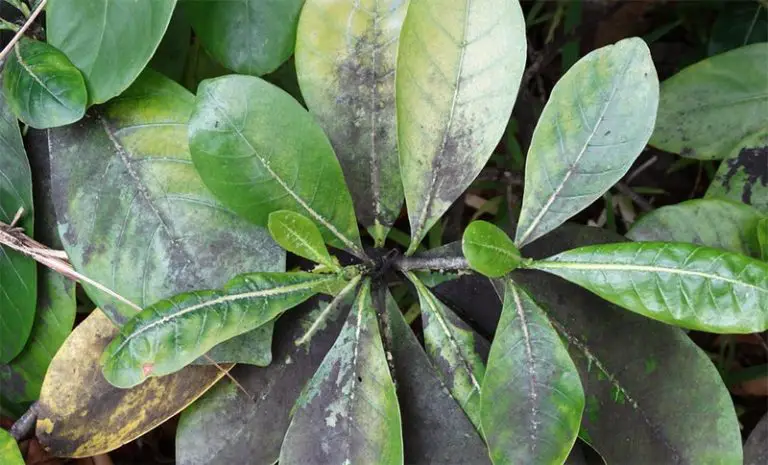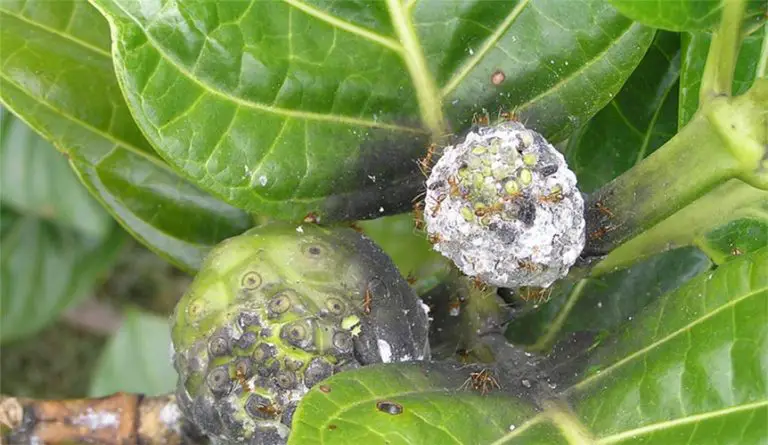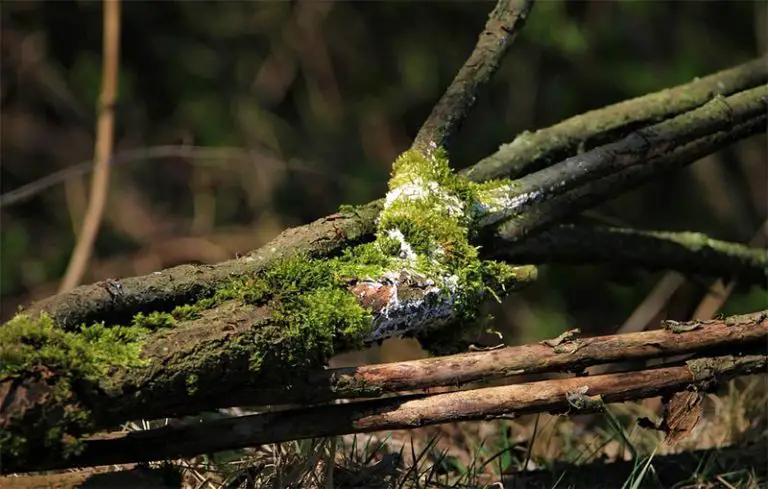Why Does My Bonsai Have Mold?
Growing and looking after a bonsai tree is never easy but can provide a lot of fun and be somewhat challenging at the same time. Knowing what molds a bonsai can attract and how to identify/deal with them is of utmost importance to any bonsai enthusiast.
Here we look at the molds that might prove troublesome and then the steps you can take to rectify the problem.

Image courtesy of 3.0 Unported
The Common Types of Mold Found on Bonsai Trees
Generally, two molds are capable of attacking a bonsai tree, affecting its foliage, roots, or branches. You’ll find that, in many cases, these are caused by your plant being over-exposed to wet or humid conditions.
Soil that’s kept too wet for too long will contribute to the growth of mold, which can quickly overwhelm your tree’s natural defense mechanisms. We’ll discuss these two types for you to identify when caring for your bonsai tree.
We have a detailed bonsai tree care guide with all the relevant information. Check the guide out here!

Pathogenic (Harmful) Mold
Pathogenic (harmful) molds generally occur in poor soil mixtures and provide no benefit for soil composition. They tend to target healthy roots for their nourishment and replication.
As these molds continue to grow, they prevent and stop nutrients from moving up the roots to the main stem.
A pathogenic mold may not be recognizable until it has significantly affected a tree’s growth above the soil, where the damage eventually becomes visible.
Non-Pathogenic (Useful) Mold
Non-pathogenic (useful) molds are found mainly in the environment. They’re classified either as saprophytic or autotrophic (molds that are useful to industries to manufacture alcohol, antibiotics, butter, cheese, lactic acids, and solvents for paints).
While these molds also improve soil fertility in agriculture, prolonged attacks will end up severely damaging your bonsai tree.

Identifying Mold on Bonsais
White mold on plants appears as a fuzzy substance that results from fungus spores. The spores multiply on the leaves and stems of a plant to form a white fuzz known as powdery mildew. This mold can significantly affect indoor and outdoor plants when growing conditions are ideal, i.e., warm, damp, and humid. The highly toxic black mold falls into this category.
A white mold that grows the surface of potting soil is usually a harmless saprophytic fungus that results from overwatering, poor drainage, or contaminated/old potting soil, which feeds on decaying organic matter in soggy soil.
Mold on leaves can appear as red, orange, or brown spots. If you look at them through a magnifying glass, you’ll see that these spots have a central area surrounded by rings.
You might also notice very fine hair-like filaments sticking up from the leaves. If left untreated, older mold spots will start changing color from brown to black. These types of mold spots can form on just a few leaves or the whole plant.
New leaves that form can also become susceptible to mold growth. Some tree species are more likely to develop mold on their leaves, branches, or roots.
Beneficial molds in soil are there specifically to help decompose organic matter and dead leaves, for example. However, overwatering a healthy bonsai plant can create an atmosphere in the ground that causes suffocation.
The roots start to die from a lack of oxygen, and the non-pathogenic mold starts to break them down. When this type of mold affects the plant, the tips of the roots will appear black and feel soft when touched.
Gardeners generally don’t discover this condition until the plant is being repotted, by which time it’s too late.
Treatment of Pathogenic Mold
Vinegar is a suitable method for destroying mold and eliminating problem white spots from your plants. Two tablespoons of apple cider vinegar mixed with a quart of water and sprayed onto infected leaves and stems are recommended. Repeat the treatment every couple of days until all traces of mold are gone.
Treatment of Non-Pathogenic Mold
Here, in keeping with the principles of Integrated Pest Management, a practical challenge to fungal diseases integrates the balancing of proper plant culture with appropriate responses.
Doing the following helps protect your garden and limits its vulnerability:
- Choose plant varieties that have proven resistance to disease, and try to match your planting area to the plant’s requirements. Poor matches can cause plants to stress and take on disease.
- Irrigate wisely. Overhead watering might just disrupt mildew spores from spreading but may then also attract and encourage water-spread pathogens. Watering nearer to the ground will reduce wet leaves, and early watering ensures that excess moisture has dried by nightfall.
- Improving air circulation and increasing light penetration for plants through clever pruning and proper spacing. Thinning out the branches of your plants or rearranging their surroundings can help.
- Prune infected plant parts without delay and dispose of the debris properly—never compost it. Always cut back into healthy tissue, ensuring that no disease remains.
- Keep your pruning implements sterilized by wiping them with common household disinfectants. If you suspect the presence of disease, wipe tools clean before and after each cut, or well-intentioned snips can spread the problem.

Is My Bonsai Tree Affected by Mold Or Another Disease?
There are several diseases, molds, fungi, and viruses that can affect a bonsai plant. The tree might show some early signs to let you know it is in trouble.
Usually, a bonsai tree that’s infected with a mold or disease will show at least one of the following symptoms:
- Distorted or discolored flowers or leaves
- Losing leaves out of season
- Leaves that turn yellow, wilt, dry, or fall
- Slowed overall growth
- Branches that droop or wilt
Shoots and leaves that show signs of dying, starting at the tips
How Do I Overcome Mold Or Disease on My Bonsai Tree?
If you find evidence of mold or disease, your main priority should be to prevent it from spreading to other places on the plant. It’s also essential to stop it from affecting other plants that might be close to yours.
Regular examination of your bonsai will result in earlier problem identification and implementation of steps for recovery. If mold or disease is unaddressed, severe damage can result and, ultimately, prove fatal. Following these steps is recommended:
- If your affected plant is close to others, remove it from the area. This will prevent cross-contamination or the spread of disease, mold, or infection.
- Remove the affected area of the plant. This usually is leaves but can be other parts.
- Spray a recommended fungicide on your plant’s remaining foliage.
- Check and remove probable causes of the problem, including over-watered soil, root rot, or poor ventilation.
- Place your treated bonsai in an area that’s properly ventilated and has good lighting. Doing this should prevent reinfection.
- Make sure to sterilize any tools you use on the tree.
Furthermore, when dead leaves and other debris build-up around plants, a humid environment encouraging mold growth is created. Keeping soil too wet can lead to root rot and the development of other fungi and mold. Treating fungus and mildew on the leaves and branches of a bonsai is somewhat easier when following these tips:
- Increase air moving around your tree by using a gentle fan.
- Don’t mist the foliage or branches, and try keeping them dry so there’s no moisture build-up.
- Treating it with a recommended antifungal medium.

Removal of Root Mold
The most effective way to battle root mold on your bonsai is by completely eradicating it. It’s typically caused by the roots being kept too wet for too long and can be evidenced by the changing color from a healthy brown to black.
Affected roots might also have an odd odor, and your tree will need to be replanted. All the mold and fungi, both pathogenic and non-pathogenic, need to be cut away from the primary bonsai plant roots before replanting.
Most savvy gardeners keep their bonsai in a planter, so removing or replacing all the soil is easier. The planter should be well-drained and kept clean using a disinfectant that discourages or eradicates fungal mold.
Pruning the plant and potting it in new soil gives your bonsai the best chance of growing back into healthy shape. Your bonsai can also be treated with an antifungal soil drench.
Final Thoughts
We trust that this article has provided you with sufficient knowledge and ammunition to keep your beloved bonsai out of harm’s way and wish you hours of happy and fruitful gardening.







